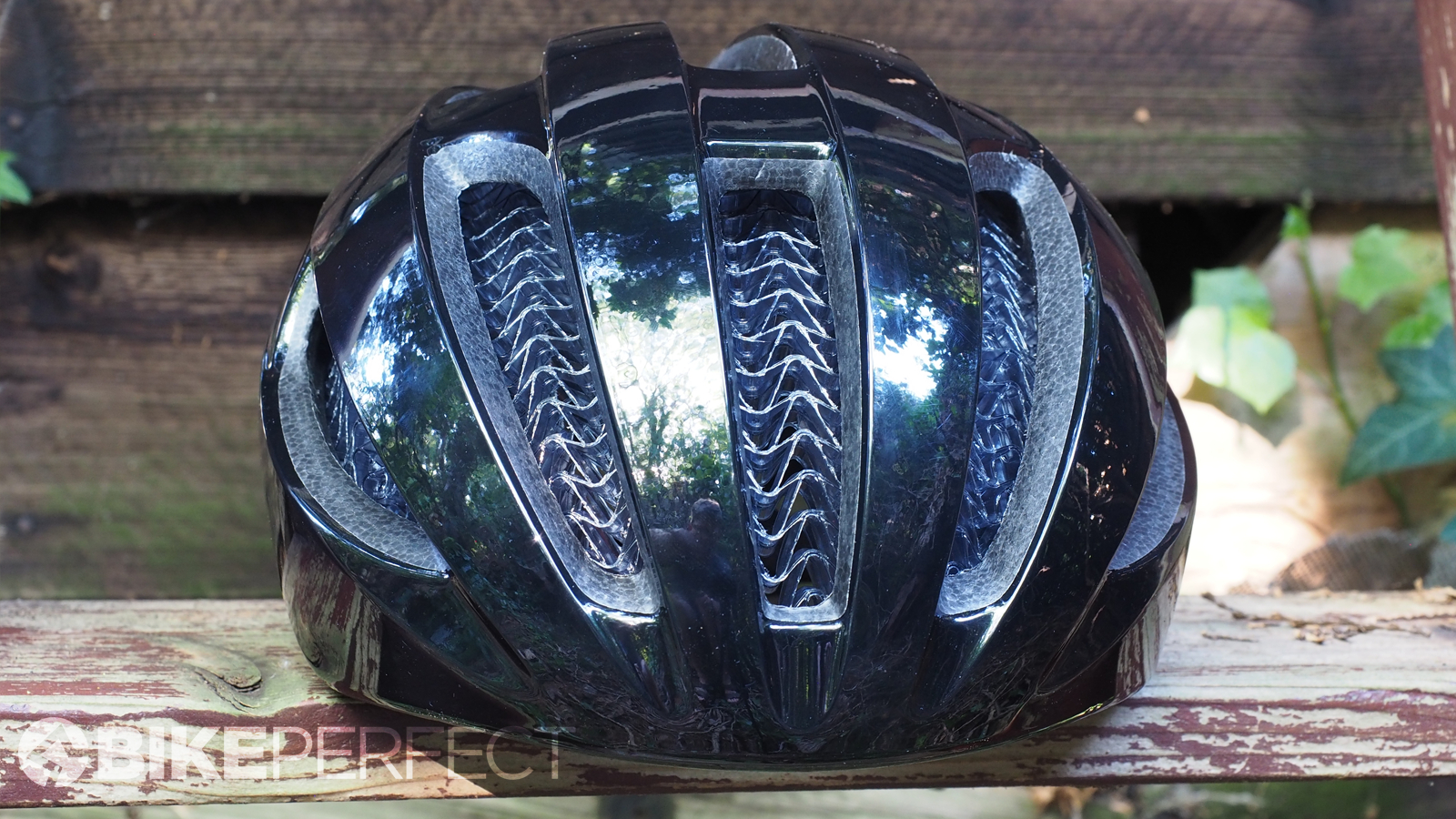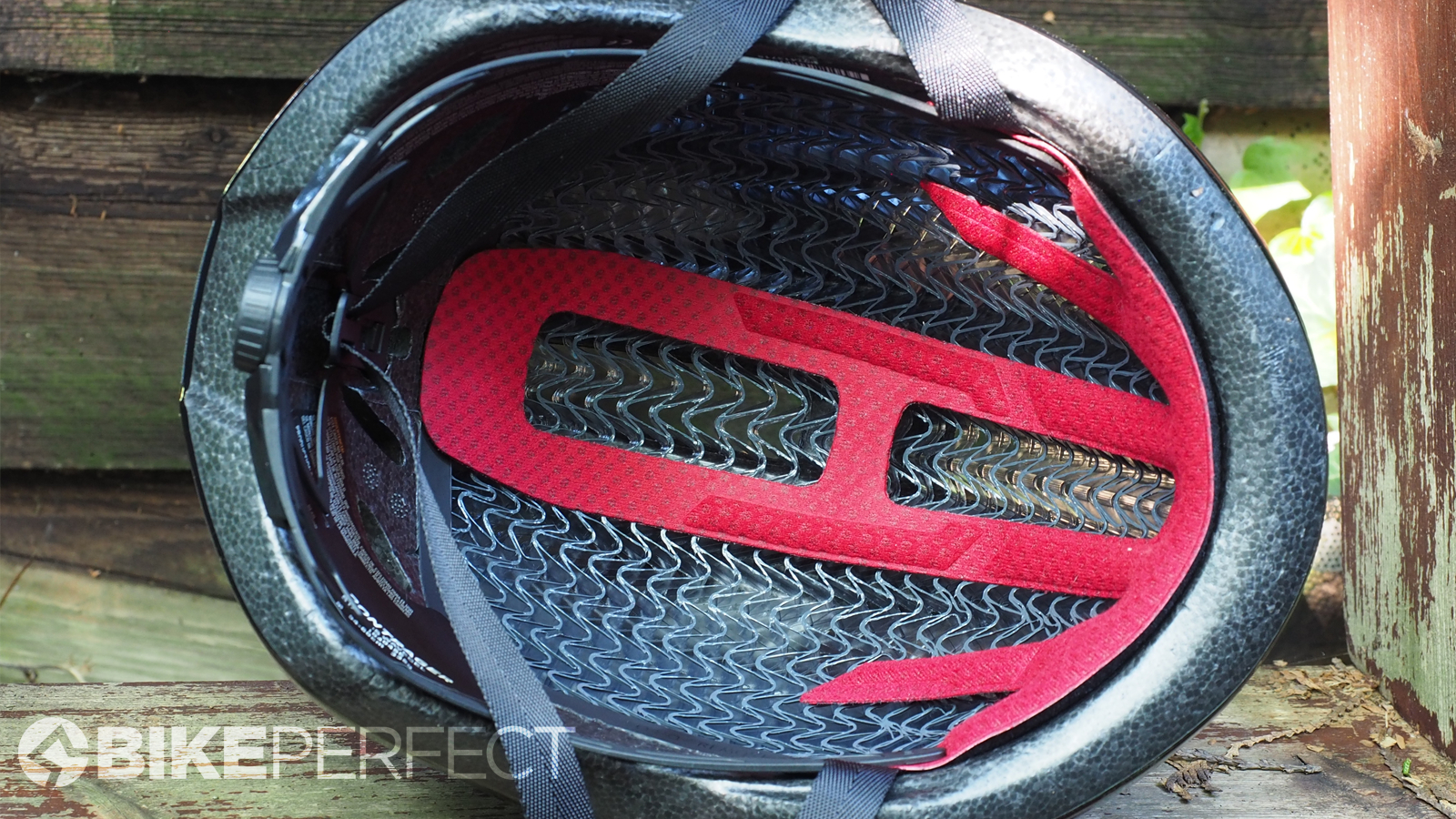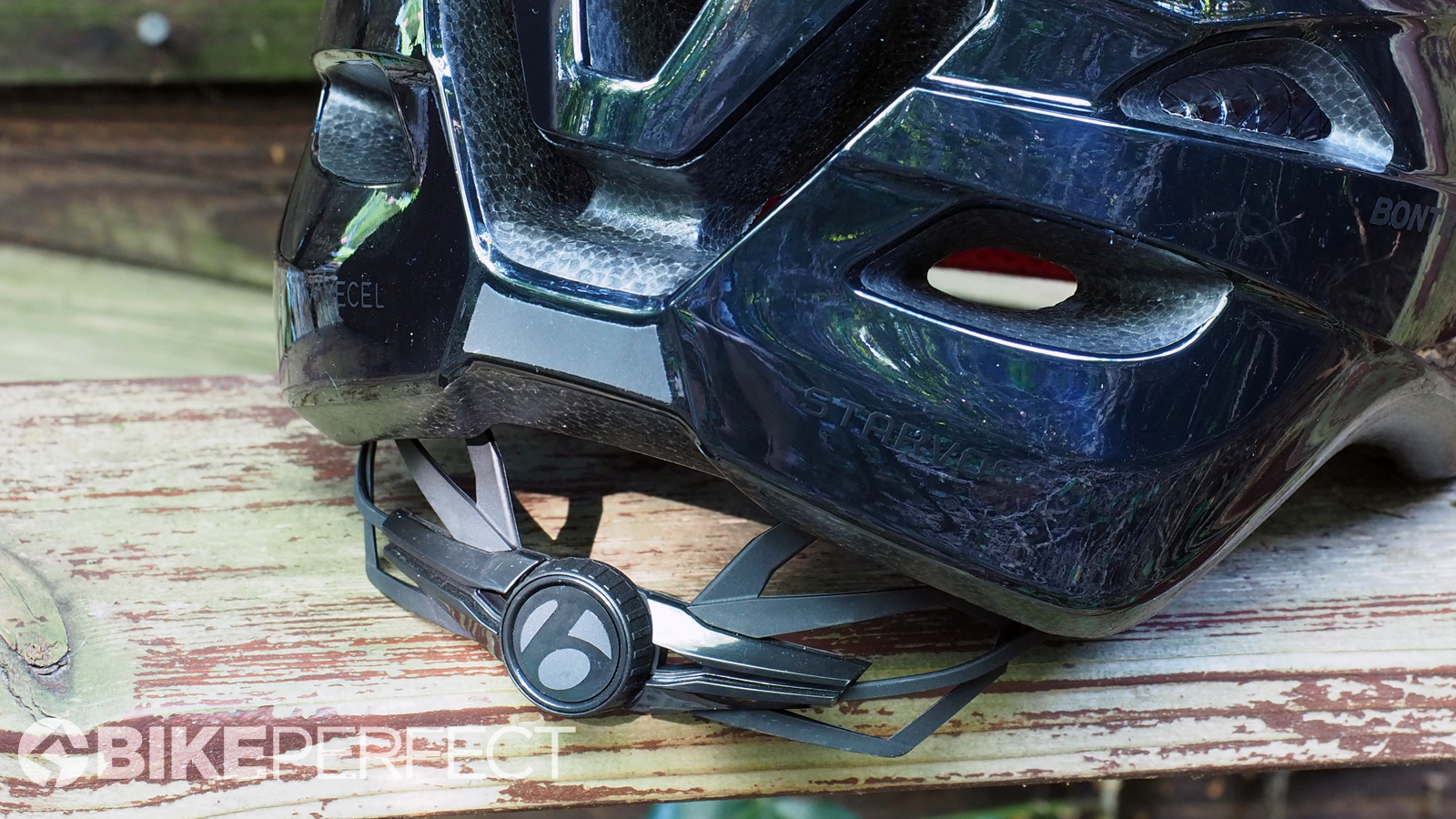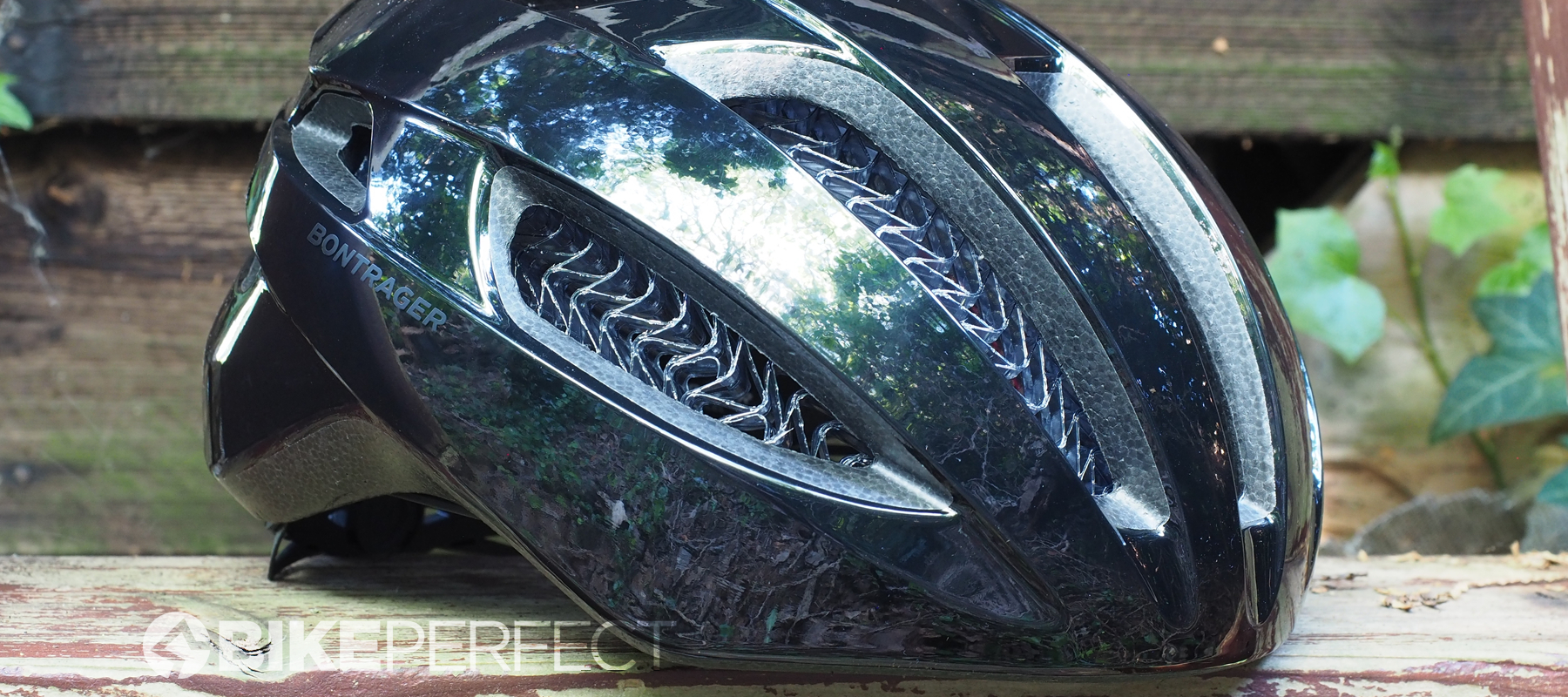Bike Perfect Verdict
You probably wouldn’t be disappointed with the Starvos as an XC or gravel helmet, but unless you are attracted by the novel crash tech, you might prefer a lighter and better-looking lid for the money
Pros
- +
Innovative impact protection technology
- +
Extra large size option
- +
30-day return and one-year crash replacement
- +
High-quality finish
Cons
- -
Average looks
- -
Average ventilation
- -
Heavy
Why trust BikePerfect
Bontrager launched WaveCel in 2019 as a new way to protect the brain in a crash. Instead of using a slightly movable liner to allow a protective degree of rotation, like MIPS, or using no rotation protection at all, WaveCel is a structural collapsible inner layer.
We’re all for progress in rider safety, and while MIPS contests Bontrager’s claims that WaveCel is significantly safer than its rivals, there’s no doubt that the WaveCel range offers good protection, with five-star ratings that put them all in the top half of helmets tested by the independent specialists at Virginia Tech. The Virginia Tech test doesn't just include the best XC helmets either, as the leaderboard features all of the best mountain bike helmets, as well as road options too.
Let’s look at how the entry-level Starvos performs as a helmet in its own right, sitting at $99.99 / £99.99 in the WaveCel range.

Design and aesthetics
The all-around Starvos isn’t as good-looking as its $149.99 / £129.99 MTB-focused sibling, the Bontrager Rally Wavecel. It’s not an embarrassing helmet to wear, but its bowl-like shape is basic and gives it a bit of an old-school flavor. The shiny plain black finish of our test sample doesn’t do it any favors either, although it’s also available in a classier white or fluro yellow options.
The inside of the helmet, which you can see through the 10 vents on the top and sides, is where the action is. Beneath a standard foam shell, the corrugated WaveCel layer of protection is substantial, and although its ridges don't look like something you’d want to push your head into in a crash, they're the ones that are designed to flex, crumple, and glide as you make an impact.
Generous removable padding lines the brow and top of the helmet, and five more air vents at the back complete the picture.

Specifications
The corrugated WaveCel layer looks rock hard, but push it hard at an angle and you can see how it’s meant to work in a crash. It’s like a crumple zone, in which the cell walls are designed to deliberately flex and then crumple to absorb impacts that would otherwise go into your head. Next - within milliseconds - the separate layers of the WaveCel accommodate some of the twisting motion that typically occurs in a crash. This is what MIPS in other helmets is designed to address; it’s rare for crashes to be neat, square-on affairs, and twisting forces can be a serious cause of concussion and brain damage.
The rest of the Starvos is entry- to mid-level and none the worse for it. The outer layers of the helmet are made up of a plastic shell, with EPS protective foam inside it (the EPS is thinner than normal because of the extra protection from the WaveCel).
The fit system is basic, with 15mm of vertical adjustment at the back and a click dial, and the straps are simple with an effective click buckle for adjustment under the ears. The rim of the inner foam layer is not covered with protective plastic, which is normal at this price point and makes it a bit more susceptible to nicks and dings.
It sits below the $299.99 / £224.99 ‘XXX’ and the $149.99 / £130 Specter road helmets, and the more trail orientated $149.99 / £129.99 Rally and $299.99 / £224.99 Blaze MTB helmets in the WaveCel lineup.

Performance
First up, despite appearances, the firm rippled ridges of the WaveCel layer aren’t uncomfortable against the head, even if you’re short of hair. And for me, the relatively round shape of the helmet fitted pleasantly and snugged up well with the click dial fit system.
Otherwise, it was a helmet that was just... fine, and relatively easy to forget about unless you asked yourself whether you could notice it. In which case, when you shake your head you realize you are aware of its slightly chunky weight. And when you think about its ventilation, especially on a warm day, you realize that while it’s by no means roasting your head, it’s not getting quite the unfettered airflow that the newest generation of MIPS lids generates.
Having not crashed scientifically in the Starvos, I can’t tell you about the protection compared to MIPS. I probably wouldn’t be persuaded to buy it on the promise of its crash protection alone though. Bontrager’s labs and MIPS’ labs will continue to argue about their results and methodologies. And while the Starvos’s five-star safety rating at the independent Virginia Tech labs is excellent, it’s also not all that rare and is achieved by helmets across the price spectrum. The most extreme example is Specialized’s Align II MIPS helmet, which at $50 / £45 also gets a five-star rating and a slightly better score breakdown than the Starvos (9.6 vs 11.2, where lower is better) for around the same weight.
Verdict
We’re absolutely all for new strides being made in safety technology and we look forward to WaveCel evolving into lighter and more streamlined products. Right now the Starvos is a slightly hard sell at the price, though you’d be unlikely to be disappointed if you had one, and it’s great that it’s available in rarer extra large sizes
Tech Specs: Bontrager Starvos WaveCel helmet
- Price: $99.99 / £99.99
- Colors: Black, white, radioactive yellow
- Sizes: X-small (53-54cm), Small (51-57cm), Medium (54-60cm), Large (58-63cm), X-large (60-66cm)
- Weight: 338g (medium)
- Key features: WaveCel protective layer

Sean has old school cycle touring in his blood, with a coast to coast USA ride and a number of month-long European tours in his very relaxed palmares. Also an enthusiastic midpack club cyclocross and XC racer, he loves his role as a junior cycle coach on the Kent/Sussex borders, and likes to squeeze in a one-day unsupported 100-miler on the South Downs Way at least once a year. Triathlon and adventure racing fit into his meandering cycling past, as does clattering around the Peak District on a rigid Stumpjumper back in the day.
Height: 173cm
Weight: 65kg
Rides: Specialized Chisel Comp; Canyon Inflite CF SLX; Canyon Aeroad; Roberts custom road bike

